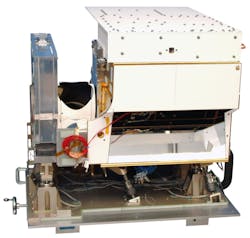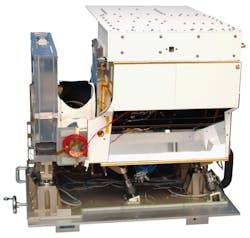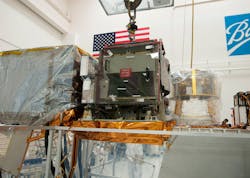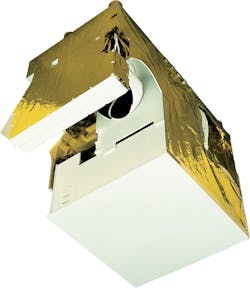Cross-track Infrared Sounder (CrIS)
The Cross-track Infrared Sounder (CrIS) instrument is the first in a series of advanced operational sounders that provides more accurate, detailed atmospheric temperature and moisture observations for weather and climate applications.
CrIS is a key instrument currently flying on the Suomi NPP satellite and represents a significant enhancement over NOAA's legacy infrared sounder—High Resolution Infrared Radiation Sounders (HIRS). The sounding accuracy of CrIS is well beyond the capabilities of current NOAA operational sounders. CrIS will also fly on the JPSS-1 and JPSS-2 satellite missions.
CrIS produces water vapor (humidity) and temperature profiles of Earth's atmosphere and works in tandem with the Advanced Technology Microwave Sounder (ATMS). Together, CrIS and ATMS instruments construct global, high-resolution and three-dimensional atmospheric temperature, pressure and moisture profiles from space.
CrIS presents information on greenhouse gases, primarily in the middle and upper atmosphere. Both CrIS and ATMS provide continuity of essential atmospheric sounder information for weather forecasting.
Benefits
- Daily CrIS measurements are used by NOAA's National Weather Service to enhance numerical weather prediction model forecasts, aiding in both short- and long-term weather forecasting. Over longer timescales, they will help improve understanding of climate phenomena, such as El Niño and La Niña—including continental transport of greenhouse gases.
- CrIS also measures atmospheric chemistry and can detect the concentration of greenhouse gases in the atmosphere, including carbon dioxide. The information from CrIS helps significantly improve weather and climate prediction, including both short-term weather "nowcasting" and longer-term forecasting.
- Together, CrIS and ATMS primarily provide data on the hydrologic cycle, which includes water vapor, clouds and precipitation. As an infrared sounder, CrIS is highly accurate and can reproduce global temperature and humidity distribution, unless it is too cloudy. Because clouds are opaque in the infrared part of the spectrum, but largely transparent at microwave frequencies, operating CrIS and ATMS together makes it possible to cover a broader range of weather conditions.
· Title: Cross-track Infrared Sounder (CrIS)
· Purpose: Produce high vertical resolution temperature and water vapor information needed to maintain and improve weather forecast skill out to five to seven days in advance
· Instrument Contractor:Exelis, Fort Wayne, Indiana
Key specs: | |
Spectral Coverage: | 1305 spectral channels from 3.92 µm to 15.38 µm |
Resolution: | FOV 14 km diam. 1km vertical layer |
Scanned Swath: | 2200 km |
Average Data Rate: | 1,900,000 bps |
Mass: | 175 kilograms |
Average Power: | 245 Watts |
Information courtesy NASA.
Related news & information:
You might also like:
Subscribe today to receive all the latest aerospace technology and engineering news, delivered directly to your e-mail inbox twice a week (Tuesdays and Thursdays). Sign upfor your free subscription to the Intelligent Inbox e-newsletter at http://www.intelligent-aerospace.com/subscribe.html.
Connect with Intelligent Aerospace on social media: Twitter (@IntelligentAero), LinkedIn,Google+, and Instagram.



